 I met Dr. Ariff Jamal in Burgundy in 2002. He had come to pick me up at the Dijon train station, a two and a half hour journey in the super fast TGV from Charles de Gaulle airport in Paris. This was my first trip to Burgundy and Aman Dhall of Brindco had requested him to extend any help required. I met Dr. Ariff Jamal in Burgundy in 2002. He had come to pick me up at the Dijon train station, a two and a half hour journey in the super fast TGV from Charles de Gaulle airport in Paris. This was my first trip to Burgundy and Aman Dhall of Brindco had requested him to extend any help required.
On my way to Beaune, the capital of the wine region I would occasionally burst into Hindi, forgetting that though he looked Indian, he was actually French and had first visited India only in 1999.
Listening to his interesting stories about the seductive wine region, we stopped at many vineyards and I had the first hand experience of how the Bourgogne wines vary in style because of the rows of vines owned by several owners. He also showed me many Domaines owned by Albert Bichot, the Burgundian negociant who has earned a name for its range of Chablis and Bourgogne reds and whites, besides a winery in Beaujolais which we would visit during my stay of 4 days.
It was a fabulous learning trip-for which I had paid for fully, to visit during the harvest time. Despite his busy schedule, he was given the freedom by his boss and now my good friend Alberic Bichot to show me as much of the region as possible. I fell in love with the region and its wines. Perhaps, an ever lasting impression was left on me when he told me while driving through the village of Echézeaux that the late Mrs. Indira Gandhi had travelled the same road many a time because she loved the Burgundy wines, especially from this village.
I have been meeting Ariff on his several trips to India during his export trips to market Albert Bichot which he helped introduce in India. I was pleasantly surprised when he called me one day to say he was coming to India and work with Brindco.
I met him a few times during his stay, in Delhi and Bangalore where I had visited recently to check out the latest developments at the winery. Here are the excerpts from various chats till he left Delhi a couple of weeks ago and went back to his family, near Beaune.
Why move to India when you were doing well in France
I had worked for 10 years with Albert Bichot, becoming the ‘best red wine maker of the year’ in 2004. I had also worked with other producers in Burgundy and Beaujolais, besides teaching winemaking at the Ecole du Vins in Beaune. This experience urged me to promote myself as an international consultant. So I quit Bichot in 2007 and spent almost a year consulting for various wineries in California. I figured this exposure would make an excellent reference as Europe and Asia were already a known territory to me.
What motivated you to move to India when you could go to many other places
As you know, I have been visiting India over the past 10 years, since my first visit in 1999 when I came to Bombay with a French VIP delegation. The wine market was raw and controlled by the bonders, bootleggers and ITDC which had a total control over the wine distribution in the five star hotels where Beaujolais was sold as a brand at an exorbitant $90.00 a bottle- even worse; it would be usually 10 years old and had in most cases turned into vinegar.
What were your first impressions of India and the wine market
I have an Indian background from my father’s side of the family. This was the first time I had set foot on Indian territory, and I had a little knowledge of the Indian culture from my short stay in East Africa. . What really impressed me was that I was a nobody; even beggars at the airport were least bothered about my presence or existence.
I noticed that wine was as good as nonexistent and saw at the time its immense potential. As I concentrated on bringing into the country the wine culture and developing the distribution of imported wines, I totally over-looked the capacity India had to offer in its own production of grapes and even wine.
How and when did you come in touch with Brindco
In fact, I was instrumental in the creation of Brindco. The market leader for imported wine in 1999 was Sanjay Menon of Sansula, Mumbai. But he made it very clear to me that he had no room in his portfolio for our wines. The other bonders were totally business minded and had no passion for wines. So, I had no choice but to create a new importer- distributor.
 Aman Dhall had just returned to India after his education in the US and working in London and was all geared up to join his father’s distribution business for local alcohol beverages like UB products. So instead of dealing with an existing importer / distributor for Albert Bichot wines, I chose to create a new distributor. Aman Dhall had just returned to India after his education in the US and working in London and was all geared up to join his father’s distribution business for local alcohol beverages like UB products. So instead of dealing with an existing importer / distributor for Albert Bichot wines, I chose to create a new distributor.
I was very happy to give training to the Brindco staff which I had helped recruit, but also the service staff of the top hotels and their F&B Managers, besides helping them source several international wine labels.
What brought you back to India last year
It all rolled out at the London International Wine Fair. I had just completed my mandate with the Californian wineries and bumped into Aman Dhall and Kapil Grover who invited me out to lunch. During our discussion, it transpired that Brindco needed to evolve into the new organized retail sector in India. The buzz was in the air with Metro, Reliance etc. developing the sales of wine within their stores. This required creating a new and different distribution model with different assortment of wines, not necessarily conflicting with the existing range. Assisting Grover Vineyards to develop their export market was also on the agenda. It seemed a great challenge that required my physical presence in India and I accepted it.
I arrived on the 4th May 2008 and settled into my rented apartment at Panchsheel Enclave in New Delhi, located by Brindco for me. I headed to the Okhla Industrial Area office the very next day to commence my new assignment.
What has been your educational background
I did my high school and first degree in Education and Business Studies from UK, Production Management and PhD in Chemistry from Germany and MBA and PhD in Marketing and communication from France and UK.
After completing my thesis for the first PhD, I was employed by Henkel in Dusseldorf as a member of their R&D. There was an opportunity in one of their profit centres in Kenya and so I took up the position of CEO in Nairobi for a period of 7 years. Due to political crisis in Kenya, I returned to France, freshly married and with two young children and took a sabbatical for 2 years during which I completed my second PhD.
But how did you enter the wine industry
Afterwards, I was in Normandy, the heart of cider and camembert, and also my wife’s birth cradle. With my chemistry background, I joined the cheese processing industry. During SIAL, the international agriculture and food fair in Paris, I bumped into a small wine producer from Burgundy who introduced me his nectar. His interest at the time was to expand his domain and find a successor and also develop the international market and mine was the curiosity of wine- so this is how it all began.
What were your first impressions and what was it like working in an Indian company
I knew the set-up at Brindco and also the employees. But my regular visits in the past had been as a supplier with a focused goal. This time it was as a team leader, as a boss. It took me a little time to settle down and acclimatise myself with the functioning and thinking pattern. Soon I took grip of the difficulties and challenges and starting introducing protocols and procedures. It was an uphill battle, but soon contracts were being signed with major players in the retail trade. This gave me some time to re-look into the existing distribution business and also help bring this up to speed – with negotiations and new and better tie ups with the international suppliers.
Where did Grover Vineyards come into the picture?
Grover was always in the picture as I was simultaneously building up an international distribution for their wines, but with the global financial meltdown and the retraction to move forward by the retail trade in India, this go slow approach, resulted in the thought that it would be wise that I return to France. After all I was an expensive cookie.This was initially in August 2008. You remember that time, I am sure.
But you stayed back and suddenly you were in Bangalore
Yes. At that time, there were serious complaints from customers concerning the quality of Grover Wines which had resulted in large number of cases being rejected by the market. Thus it was suggested that I visit the winery and carry out a complete study and analysis of the problem before my return to France.
Is that why your family never joined you?
Initially it was planned that my family would join me in India, but with all these uncertainties, I decided they were better off in France in safe custody while I was adventuring in India. They did however come over to India for their summer vacation.
What was the result of your findings in Bangalore
The finding at the winery was atrocious. I do not wish to go into details, but the whole chain starting with the vineyards, production of the grapes to the winery and the wine making required a total overhaul. As, I had stated in my report to the shareholders it would have been better to burn down the winery and start afresh.
But Grover Vineyards has a strong goodwill in the market and a strong equity
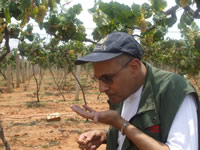 Yes you are absolutely right. But do remember that Grover vineyards pioneered the wine producing industry in India with wine grapes. It had little competition and was supplying wines to consumers with untrained palate and little wine knowledge. Yes you are absolutely right. But do remember that Grover vineyards pioneered the wine producing industry in India with wine grapes. It had little competition and was supplying wines to consumers with untrained palate and little wine knowledge.
Times have changed and consumers today are more demanding as their knowledge increases. Besides, there are new players in the market, coming out with superb quality wines. For Grover Vineyards to reach the top was easy, staying at the top was not so easy. Besides, they had made some drastic changes in their management and choice of wine-maker a couple of years ago which further led to the quality problem.
So how was this issue resolved
I divided the problem into two segments- the winery and the vineyard The winery was totally run down and needed a total refurbishing, starting from tanks, filter machines, bottling plant, water pipe lines, cooling systems including cooling tanks etc. The staff needed to be trained and the problem with sedimentation in the wines along with contamination in the winery needed to be analyzed and resolved.
In the absence of past statistics and wine history in the tanks, the whole process was a nightmare. August, September and October were dedicated to understanding and preparing for the total revamp of the winery. Simultaneously the wine supply to the market was suspended with the aim of drying up stock in the market.
In November, I drew a final conclusion and presented this to the share-holders. There was a huge financial investment involved, but the consequences of inaction were enormous. The investment decision approved, we began with the repair of wines and the winery in November. In January this year, the same wine came out into the market with a new- art collection label. The wines have since been tasted by various panels and critics both locally and internationally and have accorded high merits.
This explains the wine side. How about the vineyards
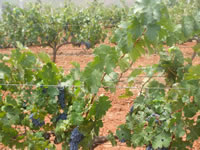 I was coming to that. We all know that we need quality grapes to make great wine. So once the wine problem was solved and the protocols were being followed by the now trained team, I only needed to superficially supervise the major problems and deal with the daily questions of management and procedures. So, I plunged into the vineyards management. I was coming to that. We all know that we need quality grapes to make great wine. So once the wine problem was solved and the protocols were being followed by the now trained team, I only needed to superficially supervise the major problems and deal with the daily questions of management and procedures. So, I plunged into the vineyards management.
The major concept of good quality was not understood and farmers were still geared to high yield production based on their experience of table grape production. Not speaking the local language which is certainly a major handicap, I started teaching, training and explaining to the farmers and the Grover vineyards field team about the concept of quality grapes and how to grow them. You must remember all this is only a small fraction of what I term as the human input; the rest being the topological and geological soil structure of the field, the climatic conditions, the choice of root stock and then the procedures of grape growing which put together leads to achieving good quality grapes.
It was very difficult for the farmers to adapt to the new suggestions, out of two reasons- one the new procedures brought in conflict with their existing practices and secondly this had a negative effect on the financing of their bank loans as low yield production meant lower income.
How about the problems one faces with the contracted farmers in the Indian wineries
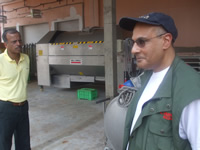 This is not a problem in India alone but it exists worldwide. Ideally the wine producer should grow his own grapes; in this manner he controls the quality. But this is not always the case and a share of the grapes needs to be out sourced. This is not a problem in India alone but it exists worldwide. Ideally the wine producer should grow his own grapes; in this manner he controls the quality. But this is not always the case and a share of the grapes needs to be out sourced.
The difficulties occur when the percentage of the out- sourced grapes takes on a larger portion of the winery requirements. In the case of Grover Vineyards, over 80% of their grapes are outsourced. They have overcome the challenge of quality by tying up with the farmers on a contractual basis and providing technical support for grape growing.
It is still a challenge to get farmers to stick to the quality standards and follow the procedures as this is cumbersome and requires a close and detailed follow up. Having explained this, it was time to set this whole procedure up and prepare for the 2009 harvest.
Can you describe the 2009 harvest at Grover Vineyards
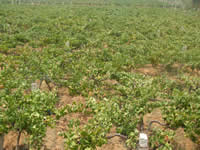 Not that complicated, in fact. Grover Vineyards is well equipped with high tech harvest machinery. In fact it is so modern that it cannot be fully used. A new team was employed and trained months in advance for the harvest from the winery receiving side. The cellar team, now fully trained knew what to do with the juice and proceed with the wine-making. Not that complicated, in fact. Grover Vineyards is well equipped with high tech harvest machinery. In fact it is so modern that it cannot be fully used. A new team was employed and trained months in advance for the harvest from the winery receiving side. The cellar team, now fully trained knew what to do with the juice and proceed with the wine-making.
The winery infra-structure was cleaned up and refurbished which made the job easy. The farmers played a participative role with the green harvest, bringing yields down to 3 tonnes/Acre.
I find it hard to believe you managed such low yields
Well, we did. A logistic system was introduced to transport the grapes from the farms in refrigerated containers to the winery. Grapes were picked in the early morning or after 5 pm. On arrival the grapes were stored in a cold room with temperatures as low as 5ºC and the grapes were then crushed accordingly to individual plots.
Now Grover Vineyards can determine the potential of each plot, production area and also the potential of each variety.
What are your comments on the Indian wine producing regions and the varietals grown
I must admit, I have learnt a lot and gained new experiences. Firstly, India is quite capable of making quality wines. The choice of the variety needs a re-think; there are regions where reds do better than whites. Moreover, there are areas where Shiraz does better then Cabernet.
The AOC system in France took centuries to take the present form. India cannot achieve the same standard by using a magic wand. Remember, Australia replanted their Riesling after over 30 years of attempts to produce a great white and opted finally for a Shiraz which today speaks for Australian wines. I feel varieties have been grown in India, be it Bangalore, Bijapur, Sholapur, Sangli, Pune and also Nasik, in a haphazard fashion. But there are areas better destined for particular grape varieties.
What do you think of the quality of Indian wines
I don’t think India will ever produce a Grand Cru Classe. But I am convinced you have the capacity to be on the world map for a top- end VDP or even a small village or AOC wines. These wines are not inferior in quality and it takes great care and art to make a great VDP.
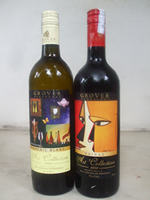 Take for example the two jewels that were made during the 2009 harvest. The Chenin Blanc ( 3500 cases ) and the Shiraz ( 2200 cases ) which derive from single vineyards and which will be commercialized under the new Art Collection labels, are simply gorgeous. Tank sample tasting at international level have already raised an eyebrow of disbelief. For the rest, these will be blended to develop the range, leaving the inferior quality for the Santé range, which surprisingly this year is very minimal in quantity as the quality standards are moving in the right direction. Take for example the two jewels that were made during the 2009 harvest. The Chenin Blanc ( 3500 cases ) and the Shiraz ( 2200 cases ) which derive from single vineyards and which will be commercialized under the new Art Collection labels, are simply gorgeous. Tank sample tasting at international level have already raised an eyebrow of disbelief. For the rest, these will be blended to develop the range, leaving the inferior quality for the Santé range, which surprisingly this year is very minimal in quantity as the quality standards are moving in the right direction.
What are the prospects for the Indian wines in the total consumption
The Indian wine industry is faced with a couple of handicaps. The first is attitude – the Indian consumer feels more comfortable with a lower end imported wine then a locally made quality wine. The consumer must have faith in local production and love his country. The second, the growth in the wine industry, 25% for 25 years, does not take local wines into account and reflects on imported wines. So this whole concept is misleading.
Third, the wine boards of various states must be more active in supporting the farmers, with education, training and advice on the production of quality grapes; they should also set up governmental institutes to help in this direction. Fourth, the local producers should team up – at least for at international and promote India as a wine producing country – there is no need to invent the wheel, all new world producing countries – be it Chile, California, South Africa, Australia etc, went this way and have achieved results. Why should India be the exception? Fifth, there should be a body, preferably government based and internationally recognized – who should control quality and set standards.
My experience at Grover Vineyards and my various personal visits to other regions and wine producers has opened my eyes to the fact that India does have the potential to become an important player in this field. But if they do not get their act together and continue to fight like crabs, the foreign wine producers have another 50 years of peace until the new generation of Indian wine producers are given a second chance.
Robert Joseph, the London based wine expert believes the Indian vineyards should follow the New World style of winemaking and not French. Your comments
I think the concept of New World and Old World is now exhausted and totally misunderstood. New World countries also make Old World style wines and vice Versa.
I feel the concept should be looked at from two points of view: Fresh young fruity wines ready to consume within 2/3 years after production and wines made to age, to be consumed after 5/7 years after production. In the case of India – it would certainly be fresh young fruity wines.
Does this mean New World? Not necessarily. Grover Vineyards follows this theme, but made under the French influence and style. As you know, Michel Rolland has been associated with GV since its inception. A personal friend of the Senior (Kanwal) Grover, he has provided advice on wine making and also lent his name on the label. Wine making and the vineyard practices are followed through by protocols set by Michel. He has an assistant – who regularly visits Grover Vineyards twice a year to provide close follow up. So I would term India as the ‘future world’ – a combination of both the Worlds, with its own particularities.
Now that you are going back to France, what are your plans and do they involve Bichot
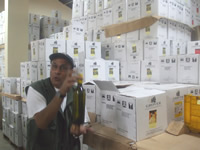 First, I plan to take a short break and holiday with the family. I am looking at a number of projects including an evaluation of spoiled wines and run down wineries. At the same time I miss the marketing and communication part of the industry. So, I am also evaluating opportunities of helping certain wineries in their challenge to market their wines. First, I plan to take a short break and holiday with the family. I am looking at a number of projects including an evaluation of spoiled wines and run down wineries. At the same time I miss the marketing and communication part of the industry. So, I am also evaluating opportunities of helping certain wineries in their challenge to market their wines.
There are numerous projects floating around and I would like to take the time to pick and choose. My chapter with Bichot was closed in 2007 when I decided to move on as an independent consultant. We shall always be friends and I shall always lend a helping hand if required with suggestions and advice.
Au revoir, my friend: You are a kamaal ka Jamal!.
Cavaliere Subhash Arora |